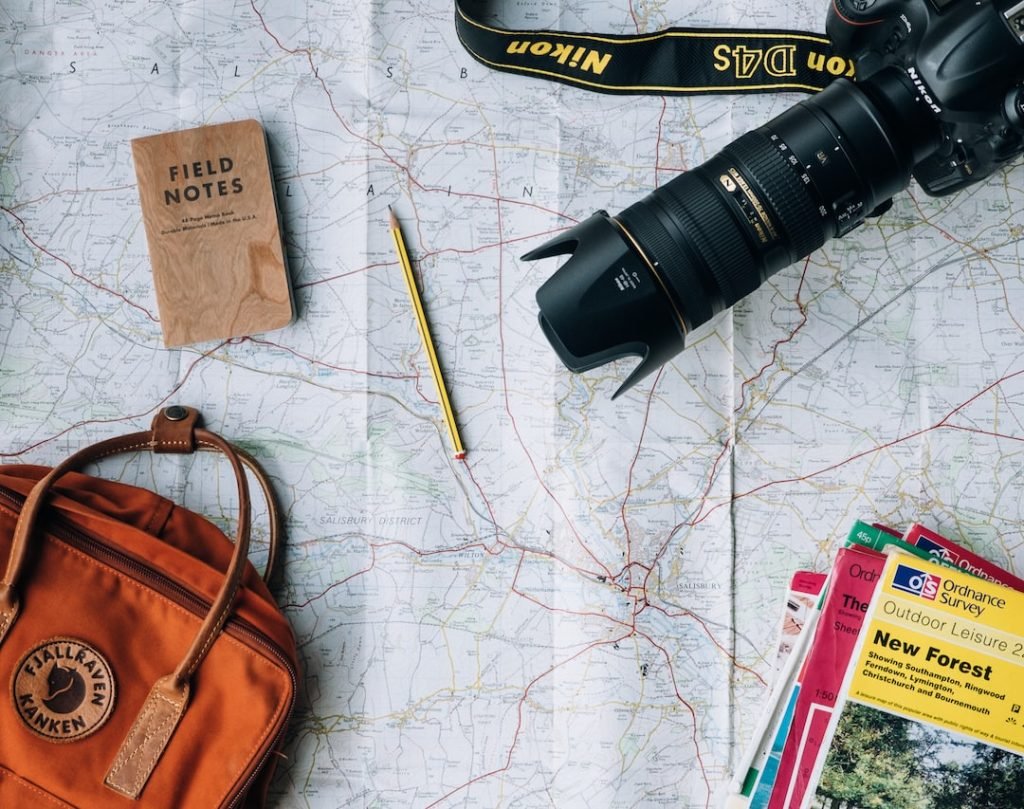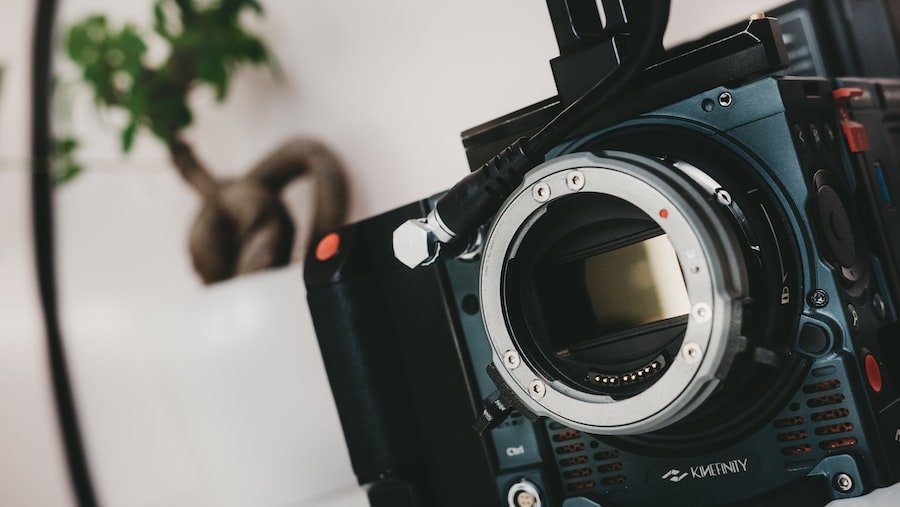

Photography in German: Key Terms for Enthusiasts
Understanding German photography terminology is essential for photographers who want to expand their knowledge and improve their skills. German is widely recognized as a language of precision and technicality, and this is reflected in its photography vocabulary. By familiarizing yourself with German photography terms, you can gain a deeper understanding of the art form and enhance your ability to communicate with other photographers. In this article, we will provide a beginner’s guide to German photography terminology, discuss its importance in photography practice, explore common vocabulary every enthusiast should know, and delve into advanced terms for experienced photographers. We will also examine the role of German photography language in professional settings, artistic expression, and connecting with other enthusiasts.
Table of Contents
ToggleUnderstanding German Photography Terminology: A Beginner’s Guide
German photography terminology may seem daunting at first, especially for beginners. However, by breaking it down into basic terms, you can start to grasp the foundations of the language. Some common German photography terms include “Kamera” (camera), “Objektiv” (lens), “Blende” (aperture), “Verschlusszeit” (shutter speed), and “Belichtung” (exposure). These terms are crucial for understanding the technical aspects of photography and how they affect the final image.
Learning these terms is particularly important for beginners because it allows them to navigate the world of photography more effectively. By understanding the language used by photographers, beginners can follow tutorials, read equipment manuals, and engage in discussions with other photographers more easily. It also helps them make informed decisions when purchasing new gear or experimenting with different techniques. Overall, learning German photography terminology as a beginner sets a solid foundation for future growth and development in the field.
The Importance of Learning Key German Photography Terms
Knowing key German photography terms can significantly improve your photography skills. By understanding these terms, you gain a deeper understanding of the technical aspects of photography and how they impact your images. For example, understanding the term “Blende” (aperture) allows you to control the depth of field in your photos, resulting in more creative and impactful compositions. Similarly, knowing “Verschlusszeit” (shutter speed) helps you capture motion or freeze action, depending on your desired effect.
Additionally, learning German photography terms enables you to communicate effectively with other photographers. Photography is a collaborative art form, and being able to discuss concepts and techniques with fellow enthusiasts can lead to valuable insights and growth. By speaking the same language, you can exchange ideas, seek advice, and learn from others’ experiences. This shared vocabulary fosters a sense of community and allows for more meaningful interactions within the photography community.
Common German Photography Vocabulary Every Enthusiast Should Know
To help you navigate the world of German photography terminology, here is a list of common terms every enthusiast should know:
1. Kamera (Camera): The device used to capture photographs.
2. Objektiv (Lens): The optical component that focuses light onto the camera’s sensor or film.
3. Blende (Aperture): The adjustable opening in the lens that controls the amount of light entering the camera.
4. Verschlusszeit (Shutter Speed): The duration of time that the camera’s shutter remains open, determining how long light is allowed to reach the sensor or film.
5. Belichtung (Exposure): The amount of light that reaches the camera’s sensor or film, resulting in a properly exposed image.
6. ISO: The sensitivity of the camera’s sensor or film to light.
7. Weißabgleich (White Balance): The adjustment of colors in an image to ensure accurate representation of white tones.
8. Fokus (Focus): The point at which an image appears sharpest.
9. Bildausschnitt (Composition): The arrangement and placement of elements within a photograph.
10. Bildrauschen (Image Noise): The unwanted grain or speckles that can appear in a photograph, particularly in low-light conditions.
Understanding these terms will allow you to navigate photography discussions, tutorials, and equipment manuals more effectively. It will also help you make informed decisions when adjusting camera settings and experimenting with different techniques.
How to Use German Photography Terms in Practice
Incorporating German photography terms into your practice can be done in several ways. Here are some tips on how to do so:
1. Study and Memorize: Take the time to study and memorize the common German photography terms listed above. Create flashcards or use online resources to help reinforce your understanding of these terms.
2. Practice Pronunciation: Pay attention to the pronunciation of each term and practice saying them out loud. This will help you become more comfortable using them in conversations with other photographers.
3. Use German Photography Resources: Explore German photography websites, forums, and magazines to immerse yourself in the language. Reading articles or watching tutorials in German will expose you to the terminology in context.
4. Label Your Gear: Label your camera equipment with the corresponding German terms. This will help you associate the terms with their physical counterparts and reinforce your memory.
5. Engage in Conversations: Seek out opportunities to engage in conversations with other photographers, both online and offline. By actively using German photography terms in discussions, you will become more comfortable and confident in their usage.
By incorporating these tips into your practice, you will gradually become more fluent in German photography terminology and enhance your overall understanding of the art form.
The Role of German Photography Vocabulary in Professional Settings

Knowing German photography terms can be highly beneficial in professional settings. Whether you are collaborating with other professionals, attending workshops or conferences, or networking with industry experts, being able to communicate effectively is crucial.
In collaborative projects, understanding and using German photography terms allows for clear and concise communication between team members. It ensures that everyone is on the same page and can contribute effectively to the project. It also demonstrates professionalism and a commitment to the craft, which can leave a positive impression on potential clients or employers.
Attending workshops or conferences in German-speaking countries becomes more accessible when you are familiar with the language. You can fully engage in discussions, ask questions, and understand presentations without relying on translations. This not only enhances your learning experience but also allows you to connect with other professionals more easily.
Networking is an essential aspect of professional growth in any field, including photography. By knowing German photography terms, you can engage in meaningful conversations with other professionals, exchange ideas, and establish connections. This can lead to collaborations, mentorships, or even job opportunities.
Advanced German Photography Terminology for Experienced Photographers
For experienced photographers looking to expand their knowledge of German photography terminology, here is a list of advanced terms:
1. Bildgestaltung (Image Composition): The deliberate arrangement of elements within a photograph to create a visually pleasing and impactful image.
2. Tiefenschärfe (Depth of Field): The range of distance in a photograph that appears acceptably sharp.
3. Dynamikumfang (Dynamic Range): The range of tones from the darkest shadows to the brightest highlights that a camera can capture.
4. Farbtemperatur (Color Temperature): The measure of the color of light, ranging from warm (yellowish) to cool (bluish).
5. Bildstabilisierung (Image Stabilization): The technology or technique used to reduce camera shake and produce sharper images.
6. Makrofotografie (Macro Photography): The practice of capturing extreme close-up images of small subjects.
7. Langzeitbelichtung (Long Exposure): The technique of using longer shutter speeds to capture motion blur or create light trails.
8. Gegenlicht (Backlight): The lighting situation where the main light source is behind the subject, often resulting in silhouettes or halo effects.
9. Bildraum (Negative Space): The empty or unoccupied areas in a photograph that help emphasize the main subject.
10. Bildaussage (Visual Narrative): The story or message conveyed through a photograph.
These advanced terms delve deeper into the technical and creative aspects of photography. By familiarizing yourself with them, you can further refine your skills and expand your artistic vision.
The Significance of German Photography Language in Artistic Expression
German photography terms can play a significant role in artistic expression. By understanding and utilizing these terms, photographers can effectively communicate their artistic vision and intentions to viewers.
For example, the term “Bildgestaltung” (Image Composition) encompasses the deliberate arrangement of elements within a photograph. By understanding this term, photographers can consciously compose their images to create a specific visual impact. They can use techniques such as leading lines, rule of thirds, or symmetry to guide the viewer’s eye and evoke certain emotions.
Similarly, the term “Tiefenschärfe” (Depth of Field) allows photographers to control what is in focus and what is blurred in their images. This technique can be used to isolate a subject from its background or create a sense of depth and dimension within the frame.
By incorporating German photography terms into their artistic practice, photographers can articulate their intentions more precisely and engage viewers on a deeper level.
The Evolution of German Photography Terminology Over Time
The history of German photography terminology is closely intertwined with the development of photography itself. As new technologies emerged and photographic techniques evolved, so did the language used to describe them.
In the early days of photography, German terminology was heavily influenced by French and English terms. However, as German photographers made significant contributions to the field, they began to develop their own vocabulary. This led to the creation of terms such as “Blende” (aperture) and “Verschlusszeit” (shutter speed), which are now widely used in photography worldwide.
Over time, advancements in technology and changes in photographic practices have necessitated the introduction of new terms. For example, the term “Bildrauschen” (Image Noise) became relevant with the advent of digital photography, as noise became a common issue in low-light conditions.
Today, German photography terminology continues to evolve alongside advancements in the field. As new techniques, equipment, and concepts emerge, new terms are introduced to describe them accurately.
Using German Photography Terminology to Connect with Other Enthusiasts
Knowing German photography terms can help you connect with other enthusiasts on a deeper level. By speaking the same language, you can engage in more meaningful conversations and discussions about photography.
When discussing techniques or concepts, using German photography terms allows for precise communication. It ensures that everyone involved understands the specific aspects being discussed and can contribute their insights effectively.
Furthermore, by engaging with German-speaking photographers, you can gain exposure to different perspectives and approaches to photography. This can broaden your horizons and inspire you to explore new techniques or genres.
Connecting with other enthusiasts also provides opportunities for collaboration and learning. By sharing your work and receiving feedback from fellow photographers, you can grow as an artist and refine your skills. The shared language of German photography terminology facilitates these interactions and fosters a sense of community within the photography world.
The Benefits of Incorporating German Photography Vocabulary into Your Practice
Incorporating German photography vocabulary into your practice offers several benefits:
1. Enhanced Understanding: By familiarizing yourself with German photography terms, you gain a deeper understanding of the technical aspects of photography. This knowledge allows you to make informed decisions when adjusting camera settings or experimenting with different techniques.
2. Effective Communication: Knowing German photography terms enables you to communicate effectively with other photographers. This facilitates collaboration, networking, and the exchange of ideas within the photography community.
3. Artistic Expression: German photography terms can be used to articulate your artistic vision and intentions more precisely. By incorporating these terms into your practice, you can communicate your ideas to viewers more effectively and engage them on a deeper level.
4. Professional Growth: In professional settings, knowing German photography terms demonstrates professionalism and a commitment to the craft. It allows you to navigate collaborations, workshops, conferences, and networking opportunities more effectively, opening doors for career advancement.
By incorporating German photography vocabulary into your practice, you can enhance your skills, connect with other enthusiasts, and further develop your artistic vision.
Understanding German photography terminology is essential for photographers who want to expand their knowledge and improve their skills. By familiarizing yourself with these terms, you gain a deeper understanding of the technical aspects of photography and enhance your ability to communicate with other photographers. Whether you are a beginner or an experienced photographer, incorporating German photography vocabulary into your practice offers numerous benefits. It allows for effective communication, enhances artistic expression, facilitates professional growth, and fosters connections within the photography community. So, continue learning and incorporating these terms into your photography practice to take your skills to new heights.
Norwegian Vocabulary in the Bathroom: På Badet (Learn Norwegian A1-A2) is a related article that photography enthusiasts may find interesting. This article provides essential vocabulary related to the bathroom in Norwegian, which can be useful for photographers who want to capture unique shots in this setting. Whether it’s photographing bathroom interiors or capturing creative self-portraits, having knowledge of the relevant terms in Norwegian can enhance the storytelling aspect of the photographs.
FAQs
What is the article about?
The article is about key terms in photography in German language for enthusiasts.
Why is it important to know key terms in photography?
Knowing key terms in photography helps enthusiasts to understand the technical aspects of photography and communicate effectively with other photographers.
What are some common German terms used in photography?
Some common German terms used in photography include Blende (aperture), Verschlusszeit (shutter speed), ISO (ISO), Belichtung (exposure), Brennweite (focal length), and Bildausschnitt (composition).
What is Blende?
Blende is the German term for aperture, which refers to the opening in the lens that controls the amount of light that enters the camera.
What is Verschlusszeit?
Verschlusszeit is the German term for shutter speed, which refers to the amount of time that the camera’s shutter is open, allowing light to enter and expose the image sensor.
What is ISO?
ISO is the same in German and English and refers to the sensitivity of the camera’s image sensor to light.
What is Belichtung?
Belichtung is the German term for exposure, which refers to the amount of light that reaches the camera’s image sensor and determines the brightness of the final image.
What is Brennweite?
Brennweite is the German term for focal length, which refers to the distance between the lens and the image sensor and determines the angle of view and magnification of the final image.
What is Bildausschnitt?
Bildausschnitt is the German term for composition, which refers to the arrangement of elements within the frame of the image to create a visually appealing and balanced final image.
If you want to learn Norwegian, you can register for classes here. We look forward to hearing from you and helping you become fluent in Norwegian.





